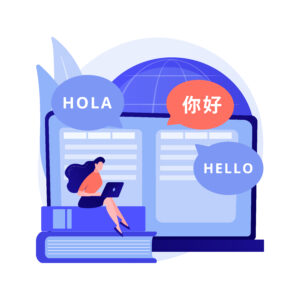Expanding your Shopify store’s reach to a global audience is an essential step in growing your e-commerce business. To tap into the vast potential of international markets, translating your Shopify store is a crucial strategy. In this guide, we’ll explore why translation is essential, the steps to translate your Shopify store, additional considerations, and helpful tips for a seamless process. Let’s embark on the journey of taking your online store global!
The Importance of Translating Your Shopify Store
Expanding globally offers numerous advantages, such as increased sales opportunities, brand recognition, and customer engagement. However, language barriers can be a significant hurdle. Here’s why translating your Shopify store is crucial:
- Wider Audience Reach: By providing content in multiple languages, you can reach customers worldwide, irrespective of their native language.
- Enhanced User Experience: Customers are more likely to engage with your store if they can navigate it in their preferred language. A seamless user experience can lead to increased sales and customer satisfaction.
- Improved SEO: Translating your store can boost your search engine rankings in different regions, as search engines recognize and reward multilingual content.
- Cultural Sensitivity: Tailoring your content to specific regions helps you connect with customers on a cultural level, fostering trust and loyalty.
Steps to Translate Your Shopify Store
1. Choose Your Target Markets
Before you start translating, identify the regions you want to target. Consider factors such as market size, demand for your products, and competition in those areas. Research local preferences, trends, and cultural nuances to adapt your content accordingly.
2. Use Shopify’s Built-in Features
Shopify offers built-in features to help you translate your store:
- Language Settings: Change your store’s language settings within the admin panel. Shopify supports multiple languages, including English, Spanish, French, German, and more.
- Content Translation: Manually translate your store’s content, including product descriptions, policies, and website pages, into your chosen languages.
- Currency Conversion: Set up currency conversion to allow customers to see prices in their local currency.
3. Leverage Translation Apps
To streamline the translation process, consider using translation apps available on the Shopify App Store:
- Langify: This app allows you to translate your store’s content and provides features for language switching, SEO optimization, and more.
- Weglot: Weglot is another popular translation app that offers automatic translation and a user-friendly interface for managing multiple languages.
4. Optimize for SEO
Each translated version of your store should be optimized for search engines. Use keyword research tools to find relevant keywords in your target languages and incorporate them into your product listings and website content.
5. Quality Control
Ensure the accuracy and quality of your translations. Hiring professional translators or using translation services can help maintain the integrity of your content. Proofread and edit translations to eliminate errors.
6. Test Your Translated Store
Before going live with your translated store, thoroughly test it to ensure everything works smoothly. Check for any issues with navigation, currency conversion, and the checkout process.
Additional Considerations for Translating Your Shopify Store
7. Localize Your Content
Localization goes beyond translation; it involves adapting your content to the specific culture and preferences of your target audience. Consider factors such as date formats, measurement units, and local holidays. This attention to detail can make your store feel more familiar and welcoming to customers from different regions.

8. Multilingual Customer Support
Offering customer support in multiple languages is essential when expanding internationally. Ensure that your customer support team can communicate effectively with customers in their preferred language. Consider using chatbots or helpdesk tools that support multilingual interactions.
9. Local Payment Options
Different regions have different payment preferences. Research the preferred payment methods in your target markets and ensure that your store supports these options. This may include credit cards, digital wallets, or local payment gateways.

10. Shipping and Fulfillment
Shipping costs and delivery times can vary significantly between countries. Be transparent about shipping fees and delivery estimates for each region. Consider partnering with local fulfillment centers or carriers to provide a smoother and cost-effective shipping experience.
11. Legal Compliance
Ensure that your store complies with the legal requirements of each target market. This includes adhering to local tax regulations, consumer protection laws, and data privacy regulations like GDPR in Europe.
Tips for a Smooth Translation Process
- Consistency: Maintain consistency in terminology and branding across all translated versions of your store. Use a style guide to ensure uniformity in your messaging.
- Regular Updates: Keep your translated content up-to-date. This includes product descriptions, promotions, and blog posts. Outdated content can harm your credibility.
- User Testing: Gather feedback from native speakers and users from your target regions. This can help you identify any linguistic or cultural issues that need addressing.
- Responsive Design: Ensure that your store’s design and layout adapt well to different languages. Some languages may require more space or have different text orientations (e.g., right-to-left languages like Arabic).
- Local SEO: Optimize your store for local search engines. Use country-specific domain extensions (e.g., .fr for France), and create targeted content for each region.
Final Thoughts
Translating your Shopify store is a strategic move that can significantly impact your e-commerce success. By expanding your reach to global markets and offering a seamless experience in multiple languages, you can attract more customers and boost sales. Remember that translation is an ongoing process. As your business grows and evolves, so should your translated content. With the right approach and the resources mentioned in this guide, you’ll be well-equipped to conquer new markets and achieve international e-commerce success. Best of luck on your journey to translating and expanding your Shopify store!


